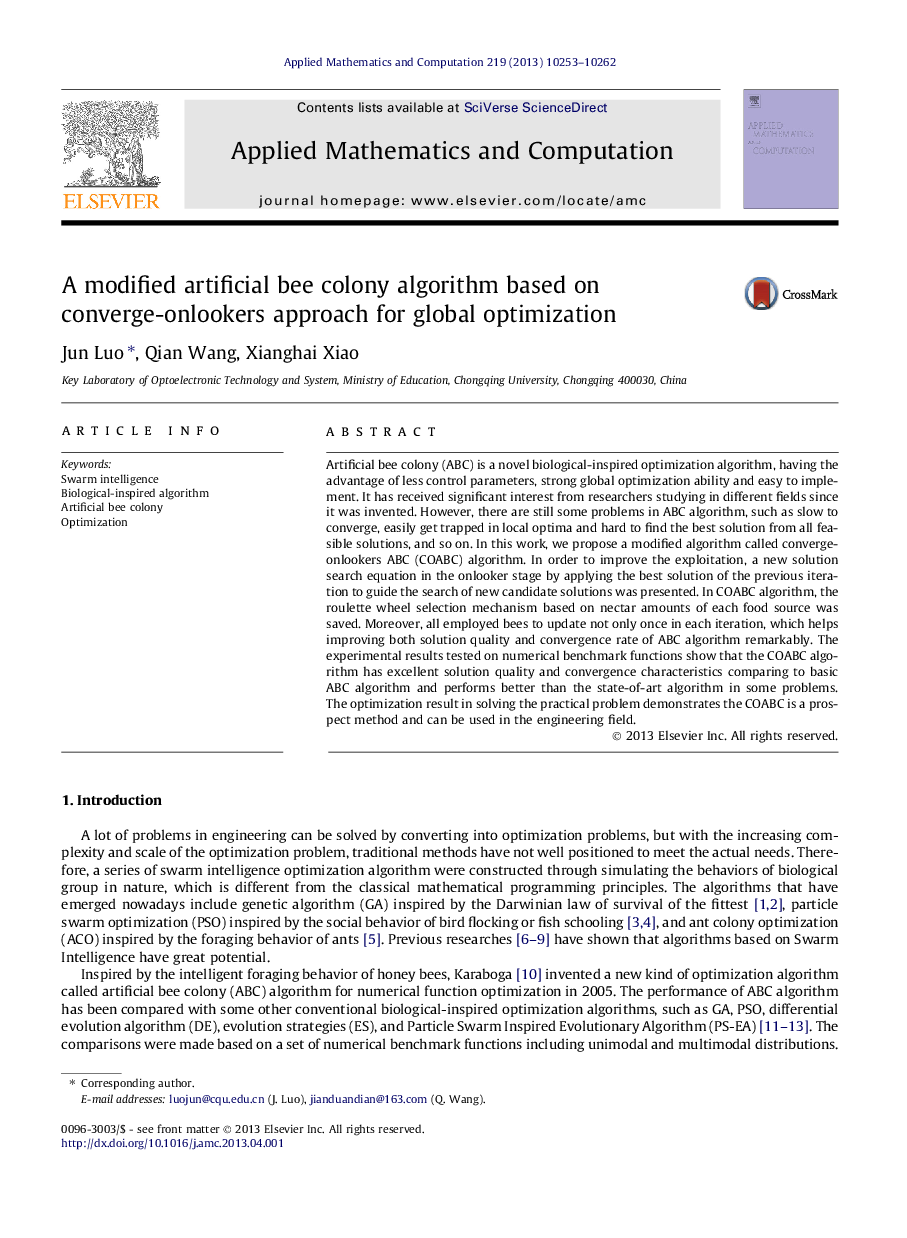| Article ID | Journal | Published Year | Pages | File Type |
|---|---|---|---|---|
| 4628725 | Applied Mathematics and Computation | 2013 | 10 Pages |
•The nectar amounts-based approach used in ABC algorithm is not very efficient.•The distribution mechanism for onlookers is modified.•The converge-onlookers technique is presented to search for the candidates.•Employed bees’ updating not only once improves the performance of algorithm.
Artificial bee colony (ABC) is a novel biological-inspired optimization algorithm, having the advantage of less control parameters, strong global optimization ability and easy to implement. It has received significant interest from researchers studying in different fields since it was invented. However, there are still some problems in ABC algorithm, such as slow to converge, easily get trapped in local optima and hard to find the best solution from all feasible solutions, and so on. In this work, we propose a modified algorithm called converge-onlookers ABC (COABC) algorithm. In order to improve the exploitation, a new solution search equation in the onlooker stage by applying the best solution of the previous iteration to guide the search of new candidate solutions was presented. In COABC algorithm, the roulette wheel selection mechanism based on nectar amounts of each food source was saved. Moreover, all employed bees to update not only once in each iteration, which helps improving both solution quality and convergence rate of ABC algorithm remarkably. The experimental results tested on numerical benchmark functions show that the COABC algorithm has excellent solution quality and convergence characteristics comparing to basic ABC algorithm and performs better than the state-of-art algorithm in some problems. The optimization result in solving the practical problem demonstrates the COABC is a prospect method and can be used in the engineering field.
